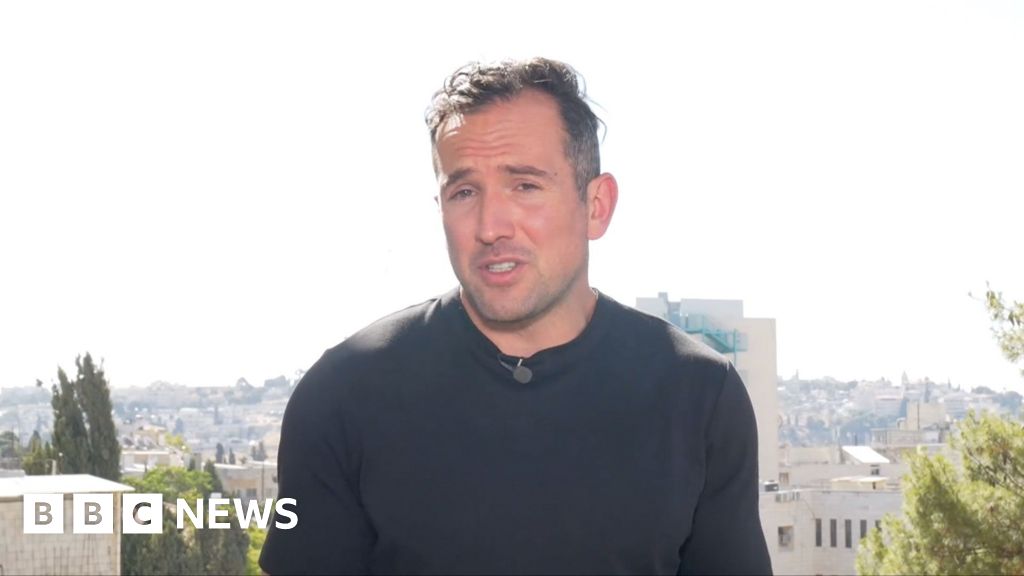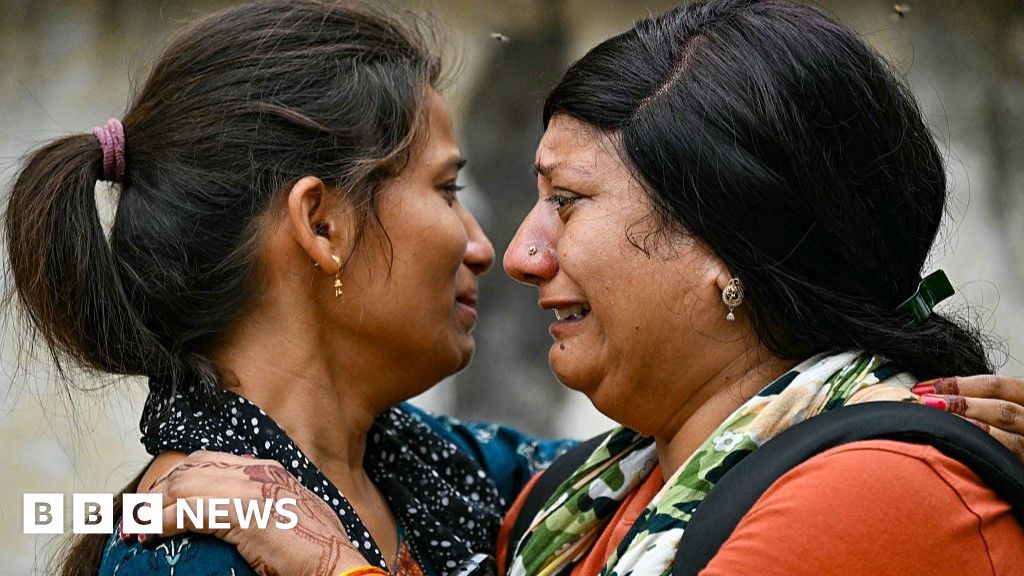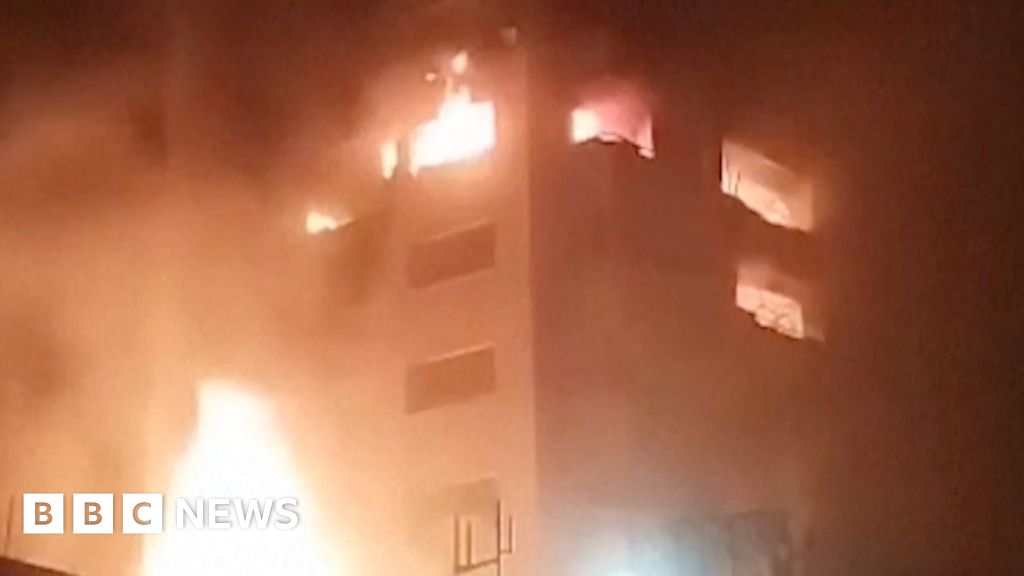ARTICLE AD BOX
Image source, Reuters
Image caption,Japan and South Korea say the missile reached a maximum altitude of 2,000km
North Korean state media has released photographs it says were taken from its biggest missile launch since 2017.
The pictures show parts of the Korean peninsula and surrounding areas seen from space.
North Korea said the ballistic missile was an intermediate range Hwasong-12.
South Korea and Japan said it reached an altitude of 2,000km (1,242 miles) before landing in waters off Japan. Both countries have condemned the launch, the seventh test this month.
The photographs, released by the North Korean state news agency, KCNA, were reportedly taken from a camera fitted to the missile's test warhead.
Image source, Reuters
Image caption,Images released by the North Korean news agency show the missile launch, and pictures taken from the missile in space
Two of the images show the moment of launch and the other apparently shows the missile in mid-flight, taken from above.
Japanese and South Korean officials estimated that the missile flew for 30 minutes to a distance of 800km (500 miles).
The UN prohibits North Korea from ballistic and nuclear weapons tests, and has imposed strict sanctions.
But the East Asian state regularly defies the ban, and leader Kim Jong-un has vowed to bolster his country's defences.
A senior United States official called on North Korea to join direct talks about its nuclear and missile programmes with no preconditions, Reuters reported.
"We believe it is completely appropriate and completely correct to start having some serious discussions," the official said.
The US earlier called on North Korea to "refrain from further destabilising acts".
North Korean missile tests are typically announced the following day by the country's state-run media.
On Monday, KCNA said the missile had been launched to "verify its accuracy". Mr Kim was reportedly not present.
It was launched to "the highest angle firing system from the north-western area to the East Sea of Korea in consideration of the security of the neighbouring countries", the agency added.
North Korea analyst Ankit Panda said Mr Kim's absence, and the language used in the media to describe the launch, suggest that this test was intended to verify that the missile system worked as it should, rather than to show off new technology.
BLUF: in '17, NK presented these launches as a much bigger deal (KJU guided them, front-page news). The message? "We have new missiles and you should know they work."
Now, it's a fact-of-life: we have missiles, they work, and we'll occasionally test them to make sure they work. https://t.co/JWjGQ0v99z
The BBC is not responsible for the content of external sites.View original tweet on Twitter
KCNA reported that the missile tested was an intermediate range Hwasong-12. It is the first time a nuclear-capable missile of that size has been launched since 2017.
That year, the missile was tested six times including two launches over the Japanese island of Hokkaido, triggering alarms and electronic alerts for residents there.
North Korea has previously said that the Hwasong-12 can carry a "large-size heavy nuclear warhead."
Why does North Korea keep launching missiles?
Seventh test this month
Sunday was the seventh North Korean missile test since the start of the year, making January one of the busiest ever months for the country's missile programme.
Experts suggest multiple reasons lie behind the spate of launches, including political signalling of strength to global and regional powers, a desire by Kim Jong-un to pressure the US back into long-stalled nuclear talks and also the practical need to test out new engineering and military command systems.
The timing is also seen as significant, coming just before the Winter Olympics in China, and ahead of the South Korean presidential election in March.
And the tests have also surged as the faltering North Korean economy struggles under US-led sanctions, pandemic-related difficulties and decades of mismanagement.
Dr Daniel Pinkston, a lecturer in international relations, told the BBC North Korea may be signalling to big powers such as China, the US and the UN Security Council, but also regional foes:
"There's a South Korean presidential election coming up in just over a month, so this is consistent with their past behaviour to try and intimidate South Korea and the incoming president," said Dr Pinkston, from Troy University and who lives in South Korea.
According to other analysts, the missiles tested earlier this month showed North Korea was developing technology that can defeat the costly and complex missile defence systems that America and Japan have been deploying across this region.
Former South Korean naval commander Professor Kim Dong Yup said: "They want to have a deterrence system that is like a scorpion's tail."
"North Korea's main purpose is not to attack but to defend themselves," says Professor Kim, adding that the country is trying "to secure a diversified deterrent capability".
Image source, EPA
Image caption,North Korea has conducted seven missile tests in January
In 2018, Mr Kim announced a moratorium on testing nuclear weapons or its longest range intercontinental ballistic missiles (ICBMs).
But the North Korean leader said in 2019 he was no longer bound by the moratorium.
The US imposed more sanctions on North Korea earlier in January, in response to previous missile launches. Negotiations between the two countries have stalled.

 3 years ago
90
3 years ago
90








 English (US) ·
English (US) ·